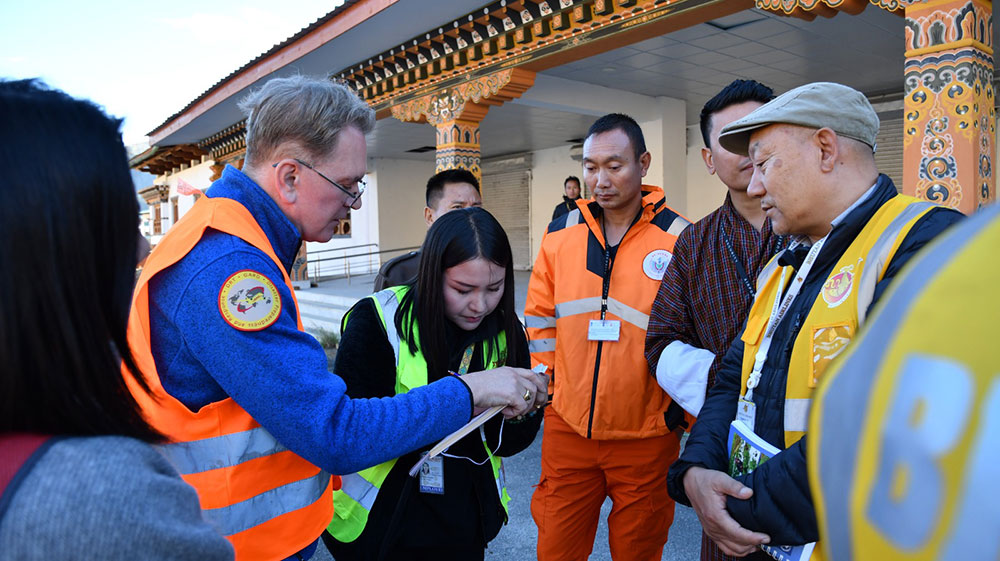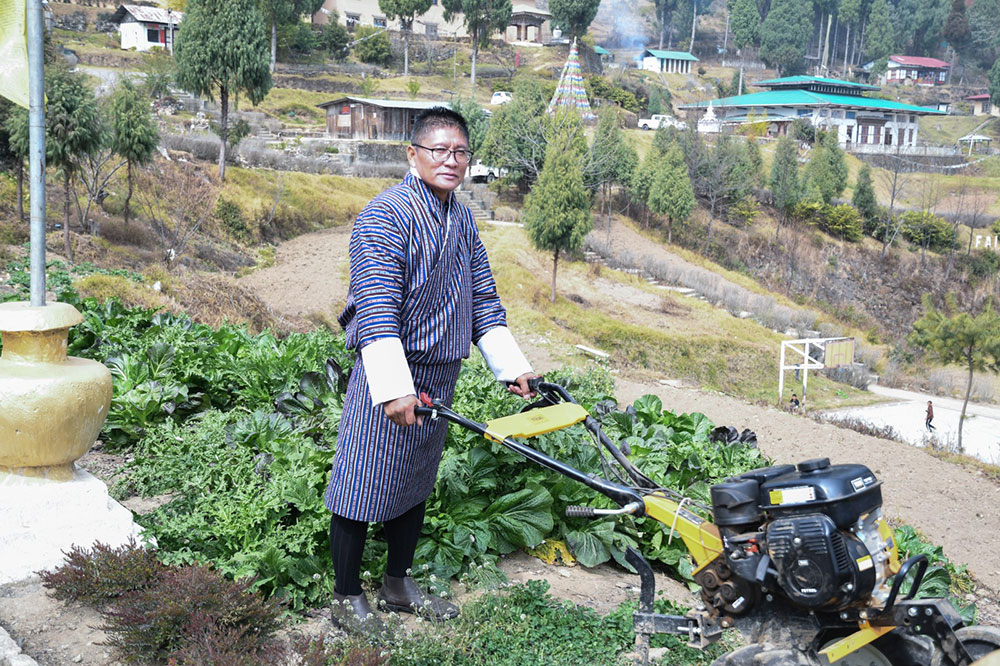YK Poudel
Malnutrition, gender barriers, and sustainable food systems are some of the key challenges Bhutan faces in its pursuit of achieving “Zero Hunger”. To address these issues, the World Food Programme (WFP) will invest USD 14,603,177 in Bhutan between 2024 and 2028.
This allocation is part of the Country Strategic Plan (CSP), which outlines specific objectives aimed at addressing these challenges. The plan focuses on achieving two main outcomes by 2030: Establishing climate-resilient livelihoods and enhancing food security and nutrition, strengthening human capital and creating a food system that can withstand climate crises and shocks.

Picture credit: WFP Bhutan
Through these strategic objectives, WFP aims to build a sustainable and resilient food system in Bhutan by the end of the decade.
Out of the total budget planned, USD 8,730,743 will be allocated towards achieving outcome one, focusing on establishing climate-resilient livelihoods, enhancing food security and nutrition. Additionally, USD 5,872,435 will be invested in outcome two, aimed at strengthening human capital and creating a food system resilient to climate change crises and related shocks for the farmers.
Bhutan’s 13th five-year plan and the UN Sustainable Development Cooperation Framework for 2024-2028 guides the CSP for Bhutan.
Country director of WFP Bhutan, Carrie Morrison, said that WFP does not provide direct food or cash benefits in Bhutan; its role is focused on technical partnership with the government, supporting capacity strengthening initiatives.
“The CSP focuses on advancing human capital development to build a more resilient food system in the country. Empowering women’s engagement in food value chains, integrate nutrition considerations into social protection programmes—school feeding, and strengthen national systems for emergency preparedness and response,” Carrie Morrison stated.
“The CSP emphasises advancing human capital development to foster a more resilient food system in the country,” said Carrie Morrison, emphasising the importance of empowering women’s engagement in food value chains, integrating nutrition considerations into social protection programmes such as school feeding, and strengthening national systems for emergency preparedness and response.
Bhutan’s ranking in the Global Gender Gap Index improved with a rise from 126 in 2022 to 103 in 2023.
Challenges
In agrarian Bhutan, agriculture is crucial as a major contributor to the national economy. However, engagement in farming is closely linked with poverty levels in the country.
Agriculture in Bhutan still operates at a subsistence level, characterized by low productivity, high post-harvest losses, limited earnings by farmers. And, a majority of farmers in the country are senior citizens.
Climate change, natural hazards, human-wildlife conflicts, and challenges in agricultural markets have compounded inequalities and created barriers to Bhutan’s achievement of its Sustainable Development Goal (SDG) objectives.
According to the WFP Bhutan’s annual country report 2023, the national poverty rate stands at 12.4 percent, with 27 percent of households unable to afford their nutrient needs. Smallholder farmers constitute 56 percent, with 65 percent of them being women.
Policy, economic exclusion and cultural norms pose major barriers to gender equality in Bhutan. For example, women’s labour force participation rate is 40.6 percent, which compares poorly with 73.1 percent for men. “About 49.4 percent of women are engaged in unpaid, informal work in family agriculture, compared with 25.9 percent of men.”
Policy, economic exclusion, and cultural norms are significant barriers to gender equality in Bhutan, according to the report. For instance, the labour force participation rate for women is 40.6 percent, significantly lower than the rate for men, which stands at 73.1 percent. “About 49.4 percent of women are engaged in unpaid, informal work in family agriculture, compared with 25.9 percent of men.”
Thus far
After decades of investment in economic growth, Bhutan achieved an improved milestone last year by graduating from the category of least-developed countries to low middle-income countries.
Over the years, Bhutan has made sustained progress towards meeting the SDG target for ‘Zero Hunger’.
However, the country still faces the burden of malnutrition, with micronutrient deficiencies, undernutrition, and overnutrition disproportionately affecting poor people.
In Bhutan, a nutritious diet costs 4.4 times more than one that meets basic energy needs, rendering it unaffordable for 27 percent of households. Stunting affects 21 percent of children under the age of 5, with a higher prevalence among poor households. “More than 33 percent of women and 31.7 percent of men aged 15–69 years are overweight, indicating a significant prevalence of overnutrition in the country,” the country report stated.
The outmigration of men and young people has notably hampered the labour burden faced by women and senior citizens on smallholding farms in Bhutan.
According to the country report for 2023, smallholder farmers with limited skills and access to finance encounter structural weaknesses in accessing agricultural markets due to inadequate storage and aggregation facilities, as well as gaps in investments in agro-processing, market infrastructure, and transport.
Consequently, Bhutan’s food markets rely heavily on imports of over 50 percent, exposing them to supply chain shortages and price inflation.
Looking ahead
The CSP for Bhutan is closely aligned with several key national strategies and plans, including the Renewable Natural Resources Strategy of 2030, which directs Bhutan’s efforts towards achieving zero hunger, as well as the National Nutrition Strategy and Action Plan for 2021-2025.
It is also aligned with the National Adaptation Plan of 2022, the Disaster Management Act of 2013 and the Food Systems Summit Pathways of 2021.
Actions related to gender equality and the protection of vulnerable population groups are guided by the Gender Equality Policy of 2020 and the Disability Policy of 2019. Priorities include rural women’s economic empowerment, the inclusion of persons with disabilities, and the creation of business and employment opportunities for young people.
These plans will be implemented through an integrated approach involving various ministries of the government, non-government agencies, civil society organisations, and private firms, ensuring a collaborative effort towards achieving the set objectives.


